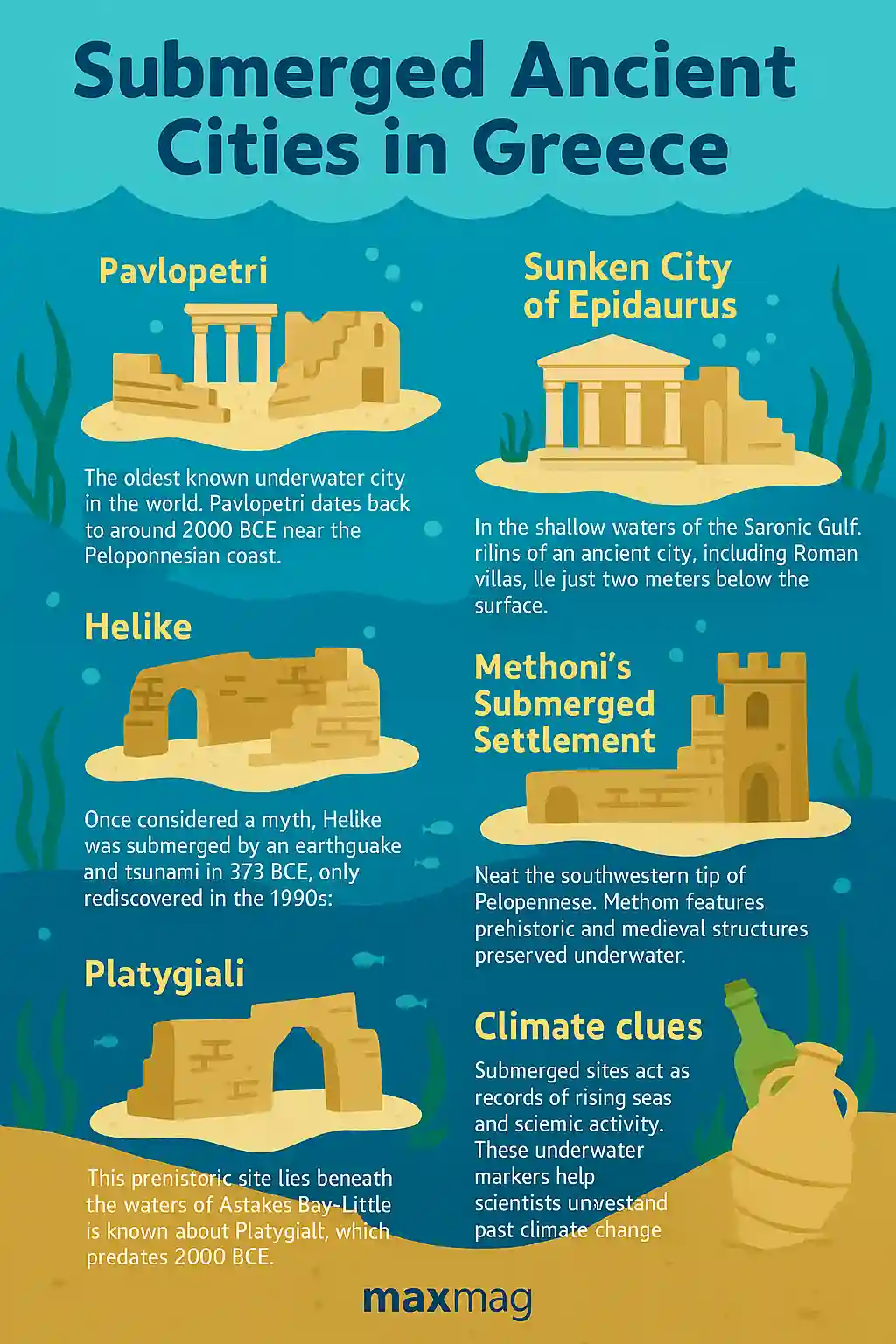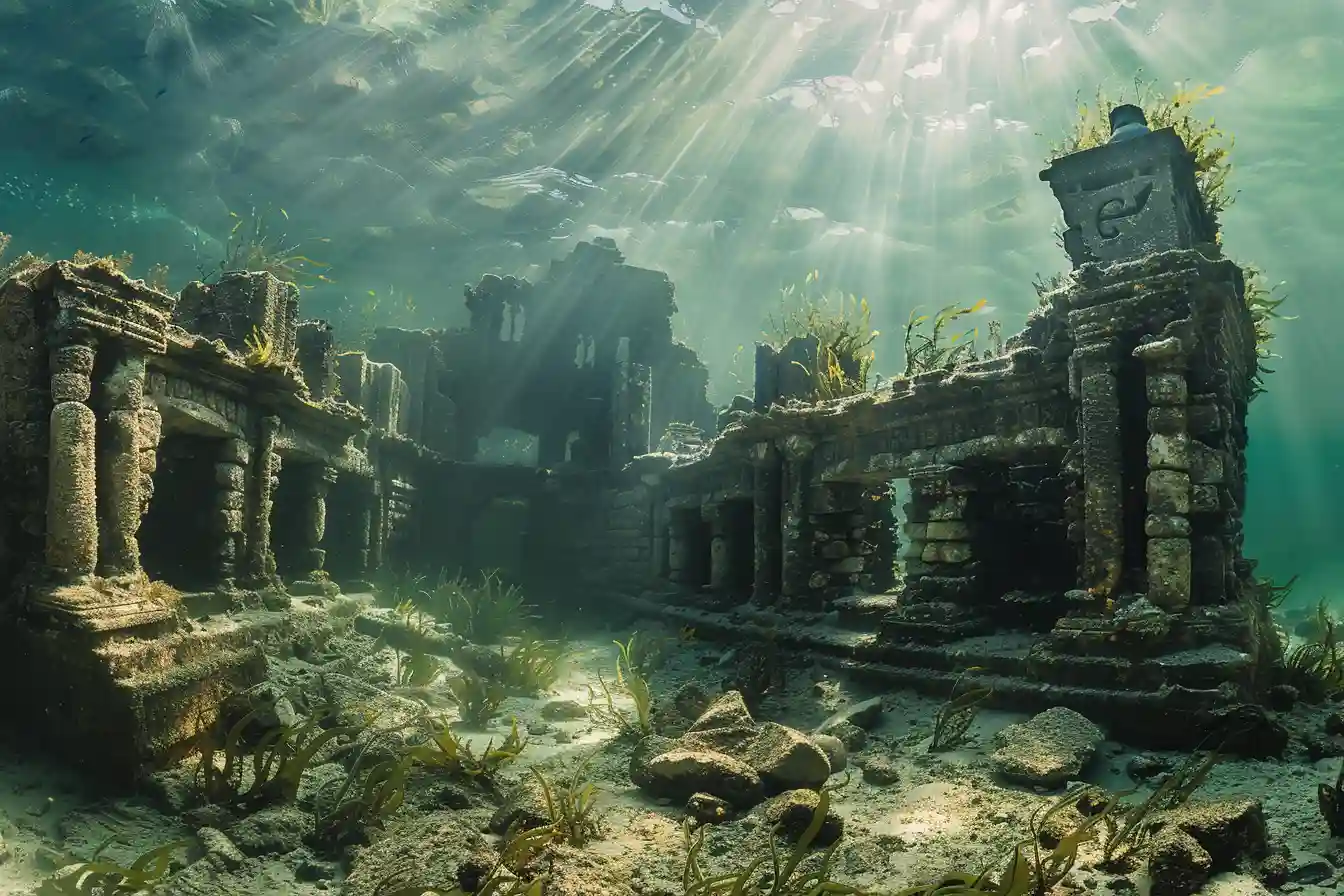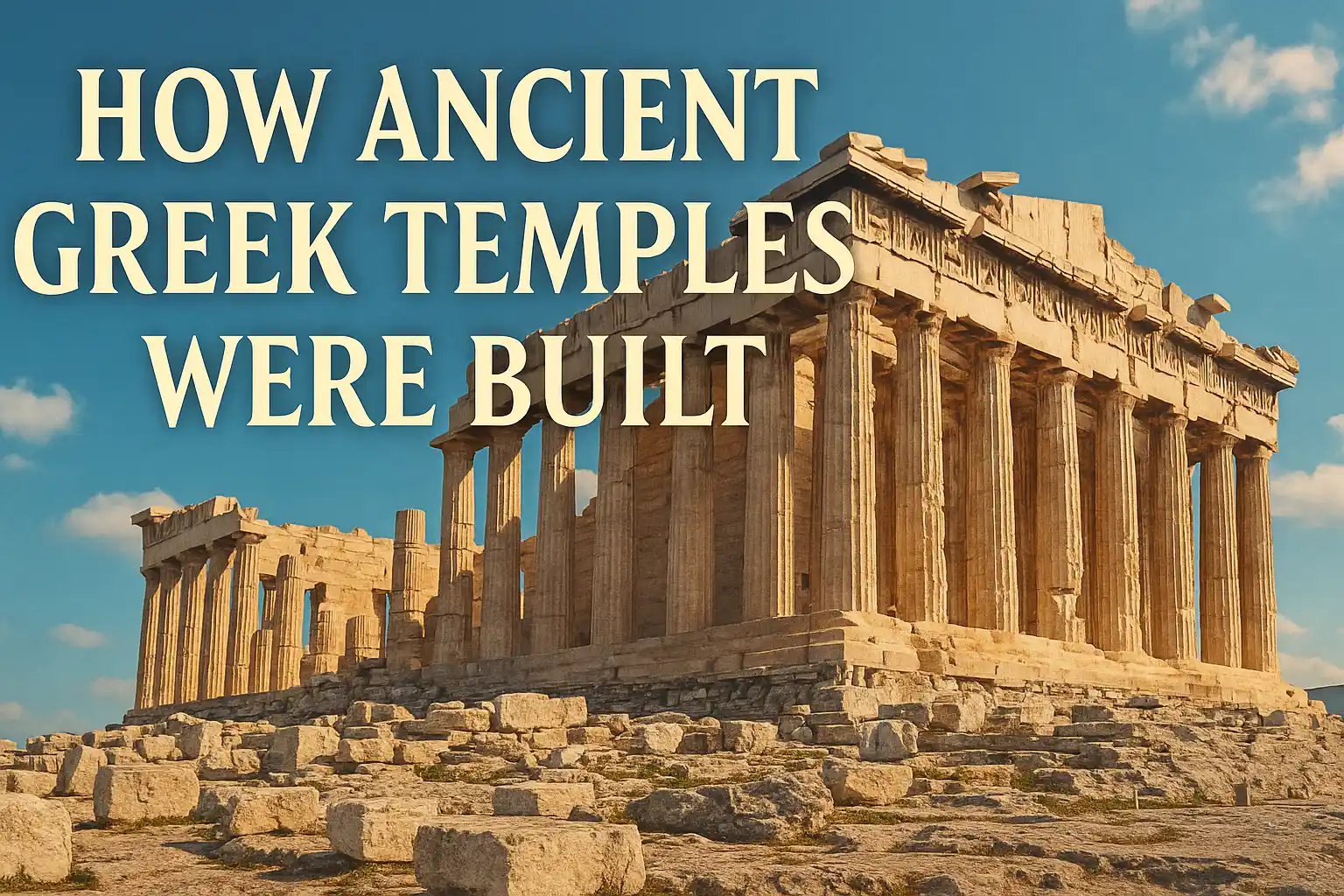
Beneath the azure waters of the Aegean and Ionian seas lie ghostly remnants of a forgotten past—submerged ancient cities in Greece that once bustled with life, trade, and culture. These drowned settlements are more than archaeological curiosities. They offer invaluable insight into prehistoric civilizations, seismic catastrophes, and the resilience of human societies. From the Bronze Age ruins of Pavlopetri to the mystical legends surrounding Helike, Greece’s underwater heritage is a submerged chapter of history now slowly resurfacing.
Pavlopetri: The Oldest Sunken City in the World
Near the southern Peloponnesian coast lies Pavlopetri, often hailed as the oldest submerged ancient city in Greece and possibly the world. Discovered in 1967 by oceanographer Nicholas Flemming and mapped in detail in 2009, Pavlopetri dates back to at least 2000 BCE.
Researchers found residential blocks, streets, courtyards, and tombs—an entire urban layout preserved beneath the sea. Advanced digital mapping revealed a well-developed textile industry and trade with Minoan Crete, as evidenced by giant pithoi (storage jars) of Cretan origin.
What’s truly remarkable is the clarity of preservation; the site has not been built over since its submersion. According to the Smithsonian, Pavlopetri may have sunk due to a massive earthquake around 1000 BCE.
Today, Pavlopetri is a prime case study in underwater archaeology, often dubbed the “Atlantis of Greece.”
🏛️ For more on Bronze Age civilizations, see our feature on ancient Sarazm.
The Sunken City of Epidaurus
Just two meters beneath the surface of the Saronic Gulf lies the sunken city of Ancient Epidaurus, near the beach of Kalymnios. Easily visible to swimmers and snorkelers, the site includes Roman villas, Mycenaean tombs, and storage amphorae scattered across the sea floor.
One of the most striking finds is a Roman agricultural villa (Villa Rustica), believed to have belonged to wealthy landowners. The location also functioned as a small harbor town and trade stop during antiquity.
To protect this submerged heritage, local archaeologists began conservation efforts in 2017, employing underwater mapping technologies similar to those used by NOAA’s Maritime Heritage Program.
Helike: The Real Atlantis?
The story of Helike, an ancient city in Achaea, has captivated historians for centuries. According to ancient sources, including Strabo and Pausanias, Helike was destroyed in a single night by a powerful earthquake followed by a tsunami in 373 BCE. The entire city sank into the Gulf of Corinth.
For years, Helike was considered a myth. But in the 1990s, archaeologists finally located remnants of the city inland, buried under layers of silt near the village of Rizomylos. Findings suggest Helike may have first sunk into an inland lagoon before tectonic shifts connected the site with the sea.
Helike has become a focal point of seismic and tsunami research. According to USGS studies on ancient earthquakes, the destruction of Helike offers valuable data on earthquake behavior in the Mediterranean.
Methoni’s Submerged Settlement
Methoni, located in southwestern Peloponnese, harbors a prehistoric sunken settlement from the Bronze Age. Underwater excavations have revealed multi-roomed structures and even parts of a medieval water pipeline connected to the Venetian fortress nearby.
What makes Methoni unique is its stratified history. Along with prehistoric structures, divers have found shipwrecks from the Byzantine and Ottoman periods, showing continuous habitation and maritime activity.
Much like Florida’s St. Augustine Lighthouse Archaeological Maritime Program, efforts in Methoni illustrate how layered underwater heritage can span millennia.
Platygiali: The Silent Depths of Astakos
Located 12 kilometers south of Astakos in western Greece, Platygiali remains one of the least understood submerged ancient cities in Greece. Believed to be more than 4,500 years old, the site sits at the deepest part of a now-submerged bay. Though partially destroyed by modern ship dismantling infrastructure, fragments of the settlement remain.
Why Platygiali sank is still a mystery. Some hypothesize it was the result of tectonic shifts, while others point to rising sea levels. Without sufficient excavation funding or geological surveys, the full story remains underwater, waiting to be told.
Submerged Cities as Climate Clues
These submerged ancient cities in Greece aren’t just archaeological gems—they’re also environmental records. By examining their layout, materials, and geographical features, scientists can track sea-level rise, climate change patterns, and seismic history over thousands of years.
In a 2023 report, the National Oceanic and Atmospheric Administration (NOAA) emphasized how sunken cities globally act as benchmarks for understanding long-term environmental shifts.
Greece’s drowned cities are a literal and symbolic intersection of natural disaster, cultural legacy, and scientific exploration.
Why These Cities Matter
-
Archaeological treasure troves: Their intact layouts and unspoiled artifacts offer a rare glimpse into everyday ancient life.
-
Seismic and environmental markers: The cities are natural laboratories for studying tectonic activity and rising seas.
-
Cultural continuity: From Bronze Age towns to Roman outposts, they trace Greece’s unbroken civilization thread.
🧭 Explore related topics like Queen Puabi and Mesopotamian burial traditions.
Frequently Asked Questions (FAQ)
Q1: Can tourists visit these submerged ancient cities in Greece?
Yes, sites like Pavlopetri and Epidaurus are accessible to swimmers, snorkelers, and divers. However, removal or damage of artifacts is strictly prohibited by Greek law.
Q2: What caused these cities to sink?
Most cities were submerged due to earthquakes, tsunamis, or gradual sea-level rise. In some cases, like Platygiali, the cause is still unknown.
Q3: Are underwater excavations still ongoing?
Yes. Greek authorities, often in collaboration with international institutions, continue to explore, conserve, and digitally reconstruct submerged settlements.
Q4: Are there similar submerged cities elsewhere in the world?
Absolutely. Examples include Dwarka in India and the ancient city of Thonis-Heracleion off Egypt’s coast. However, Pavlopetri remains the oldest mapped submerged city globally.
Q5: How are these sites preserved from damage?
Conservation methods include digital 3D mapping, underwater barriers to prevent erosion, and government-enforced diving regulations.






